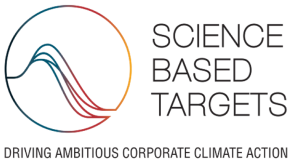DRB Industrial Co., Ltd. Main menu
All Menu



DRB Industrial manages risks in a total of four stages, beginning with climate change risk assessments and ending with reaction and improvement. We review the results from regular risk analysis, incorporate them into our management strategy, and review the performance and improvement plans in connection with specific risk management activities. Moving forward, we intend to formulate strategies grounded in the specific risks and opportunities identified at each business site through advanced analytics.
좌우로 스크롤 하시면
내용이 보입니다.
| 1. Climate change risk analysis | 2. Review of response plans | 3. Risk management and response activities | 4. Monitoring and improving risk response performance |
|---|---|---|---|
|
|
|
|
DRB Industrial has set a goal to reduce its greenhouse gas emissions by 28% by 2030 compared to 2021. It pursues a reduction strategy focused on increasing energy efficiency and cutting unnecessary energy consumption. To this end, DRB Industrial has established implementation measures centered on optimization of production processes and energy savings. It strives to minimize power consumption by analyzing energy usage of each process to reduce unnecessary operations and by introducing high-efficiency motors and inverters. Additionally, further reduction effects are anticipated from converting plant lighting to high-efficiency LEDs and optimizing heating, cooling, and ventilation systems. Considering the feasibility of renewable energy transition within Korea, DRB Industrial is considering the introduction of external renewable energy purchases (PPA) and exploring ways to increase the proportion of renewable energy use in the medium to long term.


1) Applying the 'Guidelines on Reporting and Certification of Emissions under the Greenhouse Gas Emissions Trading System’

DRB Industrial recognizes the importance of responding to climate change and actively participates in various initiatives. We have established science-based reduction targets aligned with the 1.5°C scenario for greenhouse gas emissions throughout our overall business activities. In addition, we strive to acquire the knowledge and technology necessary to accelerate the transition to net-zero emissions.

The Corporate Renewable Energy Initiative (CoREi), jointly launched in 2020 by the United Nations Global Compact Network Korea (UNGC Network Korea), World Wide Fund for Nature Korea (WWF-Korea), and the Korea Social Investment Forum (KoSIF). CoREi encourages companies to voluntarily declare a transition to renewable energy and supports them in meeting the associated targets.

SBTi is an initiative that verifies and certifies whether the company's greenhouse gas reduction goals in response to climate change are scientifically reasonable and sustainable. It enables businesses to undertake sustainable management and solve global climate challenges, thereby speeding up practical actions.